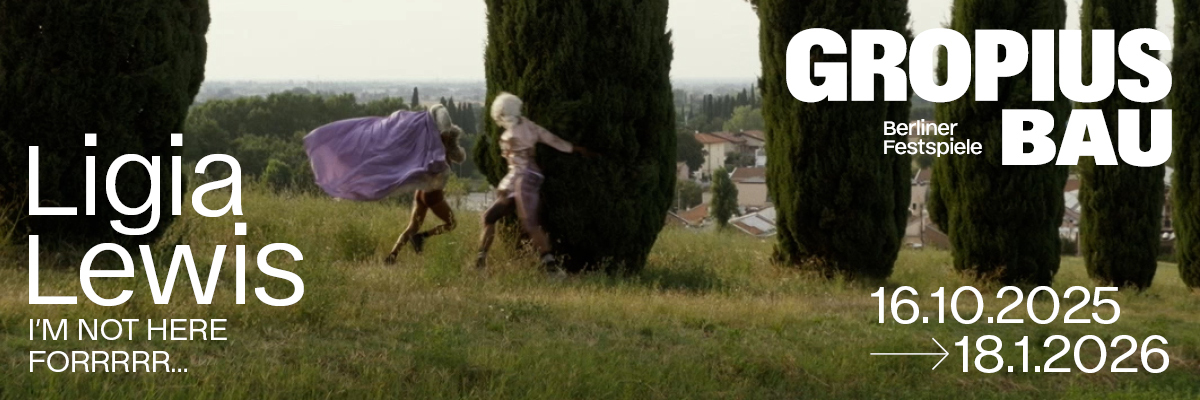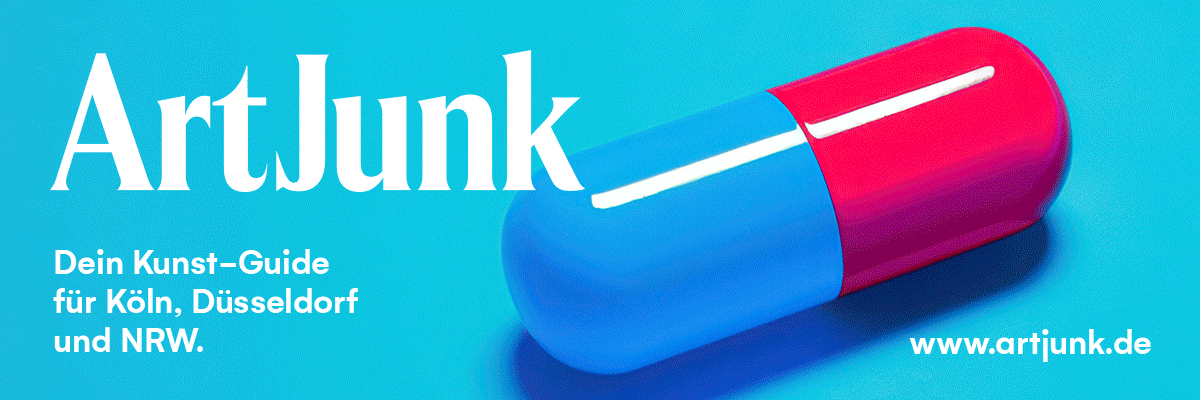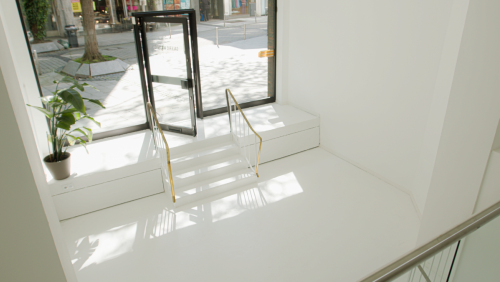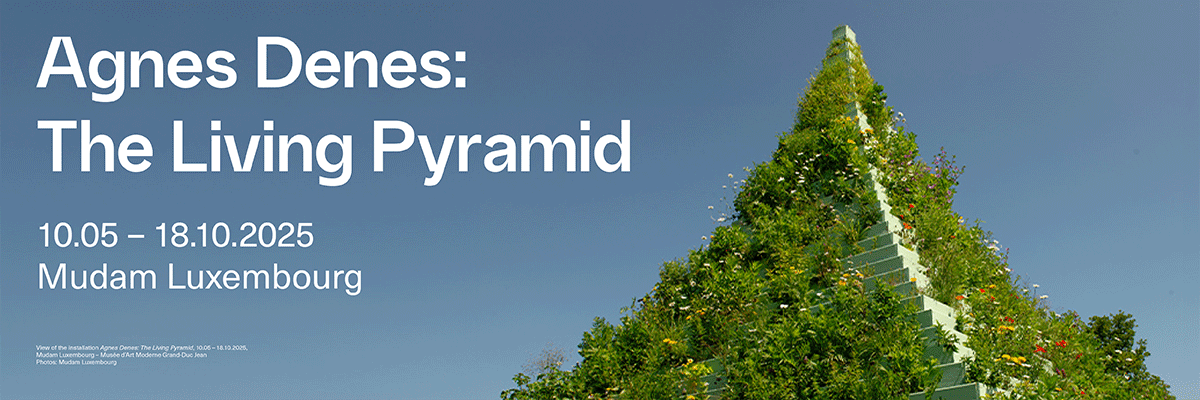
Tora Schultz
Bitch on Wheels
Project Info
- 💙 O—Overgaden Institute of Contemporary Art
- 💚 Aukje Lepoutre Ravn
- 🖤 Tora Schultz
- 💜 Rhea Dall & Aukje Lepoutre Ravn
- 💛 Laura Stamer
Share on
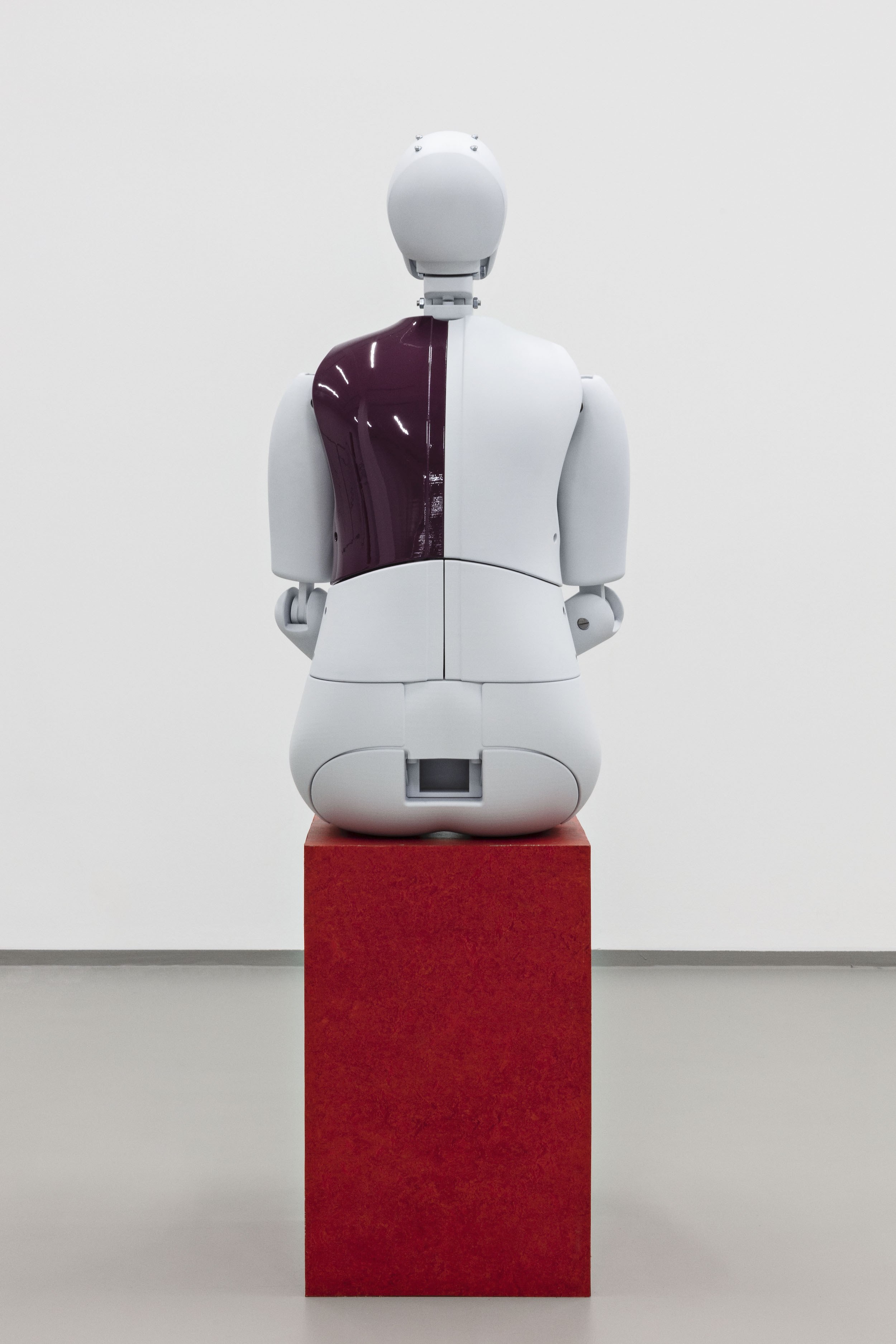
Tora Schultz: Eva, 2022. EvaRid 50th Percentile Female crash test dummy, purple and grey auto-paint, SLS, linoleum; 145 x 80 x 40 cm. Photo: Laura Stamer
Advertisement
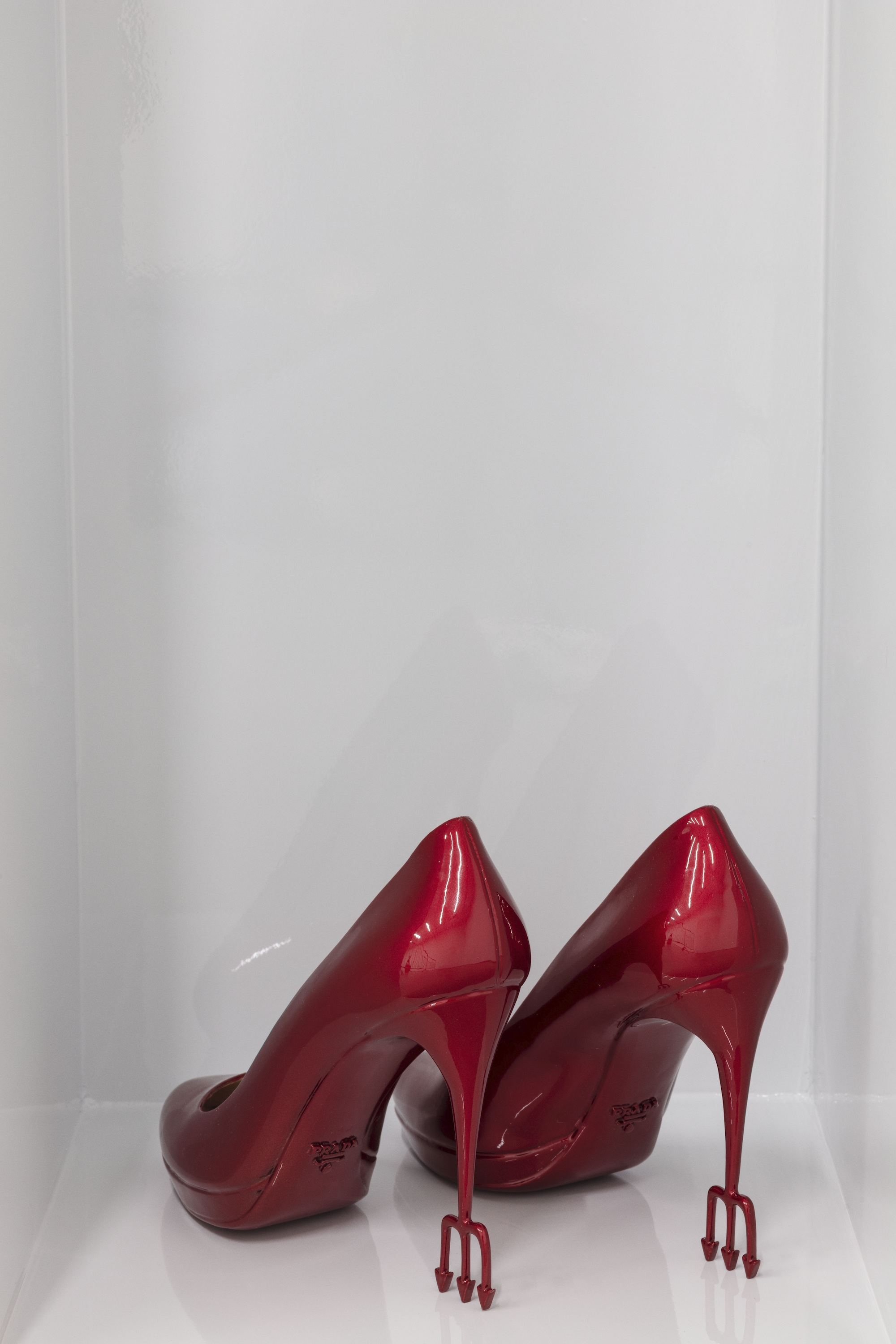
Tora Schultz: Hell on Wheels (detail), 2022. Modified Prada stilettos, red linoleum, grey auto-paint, mdf; 220 x 35 x 35 cm. Photo: Laura Stamer
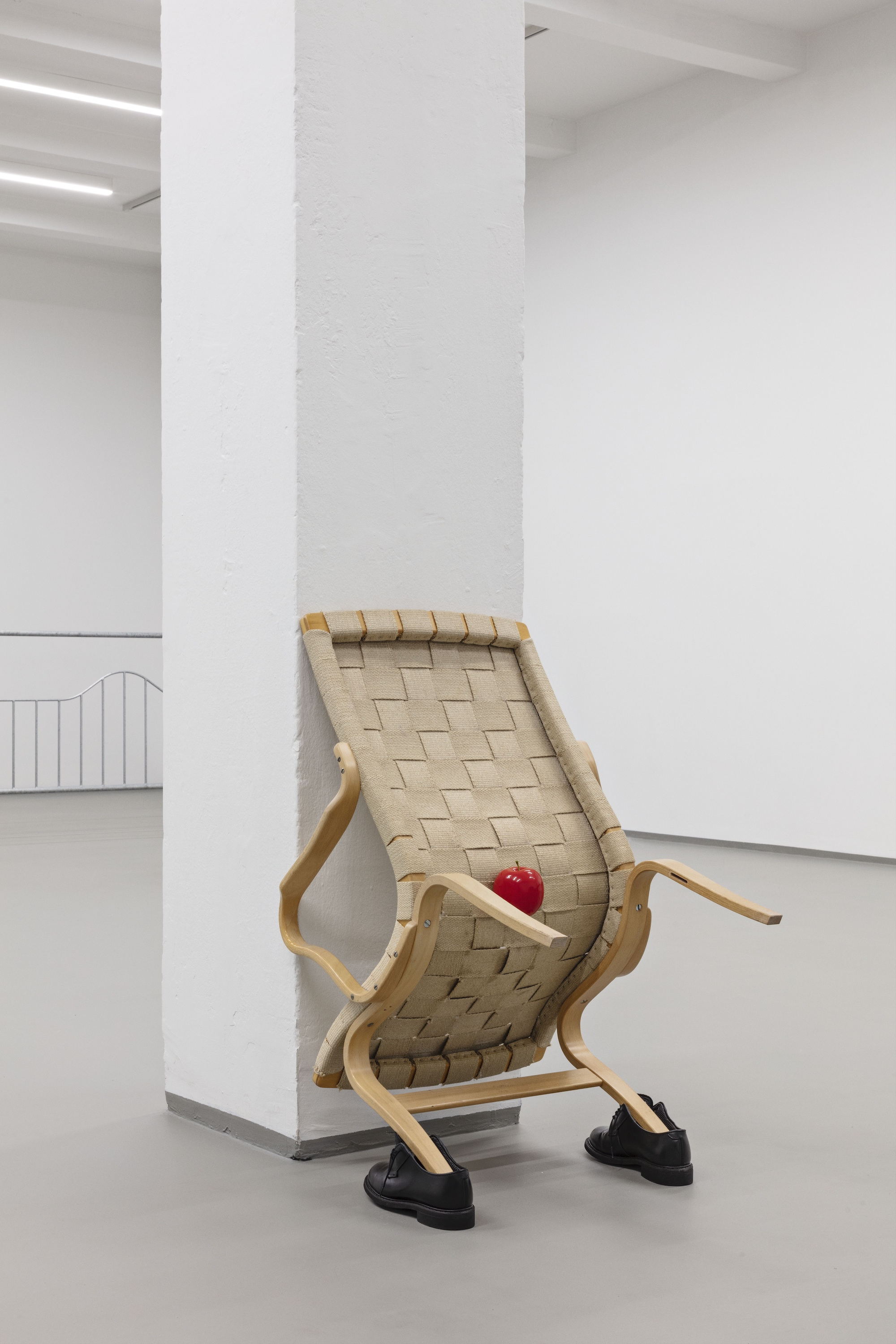
Tora Schultz: Positions, 2022. EVA Chair in bent beech by Bruno Mathsson, apple, EvaRid shoes Bates Oxford size 7.5; 95 x 70 x 50 cm. Photo: Laura Stamer

Tora Schultz: Positions (detail), 2022. EVA Chair in bent beech by Bruno Mathsson, apple, EvaRid shoes Bates Oxford size 7.5; 95 x 70 x 50 cm. Photo: Laura Stamer
With playful and diligent material detail, Tora Schultz’s sculptural practice reworks objects that are direct products of our current standardizations and supposedly unambiguous
narratives, unveiling the structural bias hidden in some of society’s most common furniture.
For the exhibition Bitch on Wheels, her first major institutional solo exhibition, Schultz has created an entirely new body of work which visually ranges from the polished surfaces
of the automotive industry to bentwood design. The artist’s materials include a crash test dummy, an apple, strappings, domestic interiors, and public barriers. Several of the sculptures
are placed in or on top of auto-lacquered and linoleumcovered podiums in either black, red, grey or dark purple.
A central theme in the works are the frozen or motionless moments: the numb body of the dummy; wood forced into static, curved shapes; the tied-up torso; and, metaphorically,
the stale rigidity of typification.
Formally, Schultz pulls apart the objects that furnish our society—actual furniture as well as warped social structures.
In Schultz’s hands objects are, quite literally, broken down to their constituent parts and then remodeled, exposing the power structures that shaped them in the first place.
One sculptural series employs the popular EVA-chair, crafted in bentwood by the heralded Swedish modernist designer Bruno Mathsson. Schultz reconfigures the chair, stripping
it of its woven seat, leaving its lacquered beech wood skeleton naked, and crossing the armrests so the chair appears to be tied-up or covering itself. In other instances, the chair
is animated by fastening it with a seatbelt, a gag ball, or putting shoes on its legs. Another series consists of seven similar looking galvanized steel sculptures that reference standard
traffic barriers, and whose general function is emphasized by the arrangement of the works as a long barricading fence.
Subtly adjusted to offer softer, curved shapes, Schultz makes the fences look like variations of double-bed headboards —a function underscored by the work’s width of 180cm— the standard size of a double bed.
Two of the exhibition’s main sculptures, Motionless and Hell on Wheels, are designed as 220cm-tall podiums, standing vertically
like slender bodies and covered in red vinyl or black car lacquer. In both, one of the sides is kept open, revealing an interior painted grey and dark purple. At the bottom of Hell on Wheels stands a pair of blood-red Prada stilettos,
the heels of which have been modified to form little devil’s tridents. In Motionless, an antique, shell-covered ceramic jar stands at the bottom. The jar itself is called takotsubo which
in Japanese directly translates to “octopus pot”. The takotsubo jar has lent its name to the cardiology phenomenon takotsubo cardiomyopathy, also known as broken heart syndrome. This is a condition where the heart muscle is suddenly weakened, usually because of severe emotional or physical stress. In this
state of shock, the shape of the traumatized heart resembles the takotsubo jar, hence the name.
A repeating trope across Schultz’s new work is the figure of “Eva” (the Danish spelling of Eve). Alongside the EVAchairs, another “Eva” is the EvaRID, an unused prototype, yet the first average female crash test dummy. The dummy
was developed by the Swedish engineer and traffic researcher Astrid Linder with a focus on ensuring that car safety does not only apply to a standardized male body. In fact, the consequence
of how crash test dummies are currently shaped in the car industry is that all “non-conforming” bodies—including the female—have generally a much higher risk of severe injury in a car accident. In Schultzʼs hands, half the 3D-printed
EvaRID torso is painted dark purple, on the side of the heart. With this subtle gesture, Schultz connects her version
of the EvaRID with the takotsubo jar, since the interior of the jar’s upright and protective sculptural body is also painted dark purple. Thus, the state of shock and the image of the heart trauma are linked.
Coming from a position of feminist, critical thinking, Tora Schultz points to the structural (gender) discrimination that seems ubiquitous in our physical surroundings. In Bitch on
Wheels the many composite materials—and their connotations of stagnation and shock—rebuke the profiling of, as one example among many, the stereotype of the powerful woman as an ill-tempered, vampish, and uncontrollable
“bitch on wheels”.
Rhea Dall & Aukje Lepoutre Ravn
